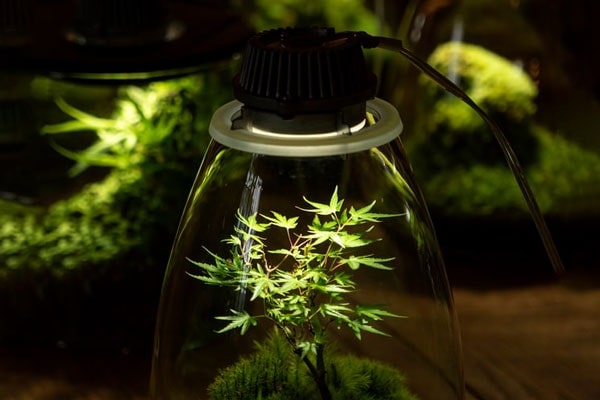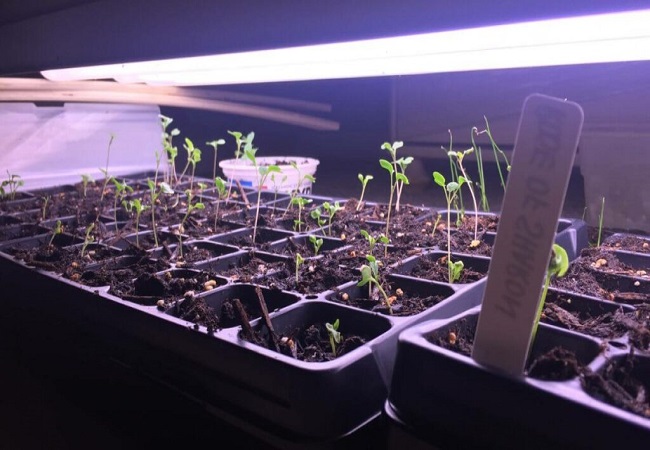Last Updated on May 6, 2023 by Md Deloar Hossain
Grow lights are an important tool for indoor gardening. They are responsible for supplying plants with the light they require to flourish. But how long should grow lights be on? The answer depends on the growing light and the plant. In this blog post, we will discuss how many hours a day grow lights should be on. When it comes to the amount of time grow lights should be left running, there are many different variables that come into play. Stay tuned to find out what’s going on!
Quick Navigation
How Many Hours A Day Should Grow Lights Be On?

It’s important to think about the type of plant you’re growing, the size and wattage of your grow light, and the season when attempting to answer this question. Generally, it is best to keep your grow lights on for between 12 and 16 hours per day.
IGrow lights may need to be on for 16 hours a day if you’re growing plants that need a lot of sunlight, like tomatoes or peppers. Lettuce and herbs, for example, don’t require much sunlight, so you can keep your grow lights on for 12 hours a day.
Keeping your grow lights on 24 hours a day is also a good rule of thumb to keep in mind.
Factors To Consider When Choosing The Amount Of Time
When choosing the number of times lights should be on in a grow room, there are several factors to consider.
- The most important consideration is the desired outcome of the grow room. For example, if your plants reach their full potential quickly, you may want to turn the lights on more frequently. To slow down the growth of your plants and allow them to reach their full potential, you may want to turn off the lights more frequently.
- Another factor to consider is the type of light used in the grow room. Some growers prefer high-intensity discharge (HID) lighting because it produces rapid results. Others prefer fluorescent light because it’s gentler and doesn’t heat the plants much. Finally, LED lights produce very little heat and can be turned on and off without damaging your plants.
- Ultimately, it’s up to each grower to decide how often they want lights on in their garden space. Finding the right light for you and your plants is critical, as there are a variety of options to choose from.
What Kind of Lights to Use?
Indoor growing is possible with a wide variety of lighting options. Incandescent, fluorescent, LED, and HID lights are just a few examples. Each has its advantages and disadvantages.
If you’re starting with LEDs, it’s important to remember that they need to be properly cooled if you want them to last long. If your light is too hot, the LEDs will start to go out quickly.
The wattage of the light, the color temperature (the type of light it produces), and the lumens per watt are all factors to consider when purchasing a light for your garden or grow room.
Here’s a quick rundown of the different kinds of lighting available:
Incandescent Lights
These lights use electricity from an outlet to produce heat, making them bright but also giving them a yellowish color. They’re not great for growing plants as they give off too much heat and aren’t very efficient at producing lumens per watt.
Fluorescent Lights
These lights work by using ultraviolet radiation from the sun to create energy that turns into light when hit by an electron beam. They offer high-quality light and are great for growing plants as they produce a wide range of colors and are very efficient at producing lumens per watt.
LED Lights
LED lights are becoming more popular as they’re efficient, durable, and don’t require much maintenance. They come in various colors, including cool white, blue, red, orange, green, and yellow.
HID Lights
High-Intensity Discharge lights use a magnetic field to create an intense amount of light. They’re not the best option if you want to grow plants indoors as their light is very bright and can damage your eyes.
Faq About How Many Hours A Day Should Grow Lights Be On
How Long Do Grow Lights Need Indoor Plants?
The amount of time a grow light needs to be on for indoor plants depends on the plant type, its growth stage, and the light’s intensity and spectrum. Generally speaking, plants need between 12 and 16 hours of light per day to grow optimally.
How Many Hours Of Artificial Light Do Plants Need?
Plants need anywhere from 6-10 hours of artificial light a day, depending on the type of plant. While most plants can grow in natural sunlight, some plants (especially those that are grown indoors) need more artificial light to grow properly. Artificial light can come from several sources, such as fluorescent or LED light bulbs.
Can Plants Burn Under Grow Lights?
Plants can burn under grow lights. The intense light from the grow lamps can scorch the foliage and cause browning or even burning.However, there are steps you can take to avoid this. One is to ensure that the plants are not too close to the lamps; another is to use bulbs that emit a cooler light spectrum.
When Should I Switch My Lights To 12 12?
The most efficient time to switch your lights to 12 12 is typically when you are not using them or when daylight savings ends. The 12 12 settings will save you money on your energy bill and are recommended by the Department of Energy.
How Many Hours Of Darkness Do Plants Need?
Plants need an average of 8-10 hours of darkness each day to grow and flower properly. However, some plants, such as tomatoes, can tolerate up to 12 hours of light each day, while others, such as poinsettias, require only 4-6 hours of darkness each day. The amount of darkness required varies depending on the type of plant and its stage of growth.
Can Plants Survive With Only Grow Lights?
Plants can survive with only grow lights as long as they get the correct spectrum and intensity of light. Grow lights are usually designed to emit a spectrum of light that is similar to the sun, so plants should be able to grow normally under them. However, it is important to ensure that the plants get enough light, especially if they are not being grown in a natural environment.
Conclusion
The number of hours that grow lights should be on depends on several factors, including the type of plants you are growing, the stage of growth they are in, and the intensity of the light. Generally, most plants require between 12 to 16 hours of light per day during the vegetative stage and 8 to 12 hours during the flowering stage. However, some plants may require more or less light, so it’s essential to research the specific needs of your plants.

Plants are my life. I’m a plant whisperer and an amateur gardener who loves to share gardening tips and tricks with you!


